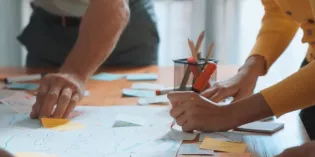There is growing evidence that respiratory problems among children may be exacerbated by indoor air pollution in homes, schools and nurseries, according to a joint report by the Royal College of Paediatrics and Child Health (RCPCH) and the Royal College of Physicians.
The report, informed by a RCPCH commissioned systematic review of 221 studies, presents evidence linking indoor air pollution to a range of childhood health problems including asthma, wheezing, conjunctivitis, dermatitis and eczema. Sources of indoor air pollution include smoking, damp, the burning of fossil fuels and wood, dust, chemicals from building materials and furnishings, aerosol sprays and cleaning products.
The authors warn that indoor air quality tends to be poorer in low quality housing where ventilation may be inadequate or insufficient.
The report recommends that local authorities should have the power to require improvements where air quality fails to meet minimum standards in local authority schools and houses. This should be extended, according to the authors, beyond damp and mould (where powers already exist) to include other pollutants. The report recommends:
- Legally binding performance standards for indoor air quality to include ventilation rates, maximum concentration levels for specific pollutants, labelling of materials, and testing of appliances
- Air quality tests when local authority construction is complete and before the building is signed off
- Compliance tests after construction stages and assessment of buildings once occupied – this may require ring-fenced resources for local authorities to take enforcement action.
The report recommends local authorities should follow the NICE guidelines for Indoor air quality at home. It warns “exposure to indoor air pollution from cookers, damp, cleaning products and fires can irritate the lungs and exacerbate asthma symptoms.” It encourages people to ensure rooms are well ventilated by opening windows or using extractor fans, especially when cooking, drying clothes inside, or using sprays, solvents, and paints.
Professor Jonathan Grigg, Paediatric Respiratory Consultant from the Royal College of Paediatrics and Child Health (RCPCH) said:
We’re finally paying attention to the quality of our outdoor air and this is long overdue. It’s harder to get population level data on the quality of indoor air but the evidence in this report paints a worrying picture. Children in the UK spend most of their time indoors, with just 68 minutes spent outside on an average day. Too many of our homes and schools are damp and poorly ventilated – this is adversely affecting the health of children.
The report says local authorities should provide free indoor air testing for residents. It recommends a national fund to support improvements for low income residents who report issues with ventilation and air quality.
Professor Stephen Holgate, Special Advisor for the Royal College of Physicians said:
Poorer households have fewer choices about where to live and where to go to school. More than three million families live in poor quality housing in the UK. Most will not have enough money to make improvements and have no option but to make do with damp, under-ventilated environments. We need to offer support at local authority level – likewise with schools. If we ask our children to spend their childhood days in unhealthy spaces, then we’re storing up problems for future health.
The report, The Inside Story: Health effects of indoor air quality on children and young people, makes further recommendations:
- A cross-governmental committee to co-ordinate working in health, environment, education and homes for indoor air quality
- Advice for the public about the risks of, and how to prevent, poor indoor air quality
- Investment in high quality research and evidence to support decision making
The Inside Story: Health effects of indoor air quality on children and young people is jointly published by the Royal College of Paediatrics and Child Health (RCPCH) and the Royal College of Physicians (RCP). It was possible due to grants and donations from Allergy UK, Airtopia (David Evans), Asthma UK, British Electrotechnical and Allied Manufacturers’ Association, British Heart Foundation, British Society for Allergy and Clinical Immunology, Dyson Technology Limited and Mayor of London's Office. The funders had no scientific or editorial input into the findings or recommendations.
Contact
Press office: press.office@rcpch.ac.uk / 0207 092 6067
Out of hours: 07772 686022










